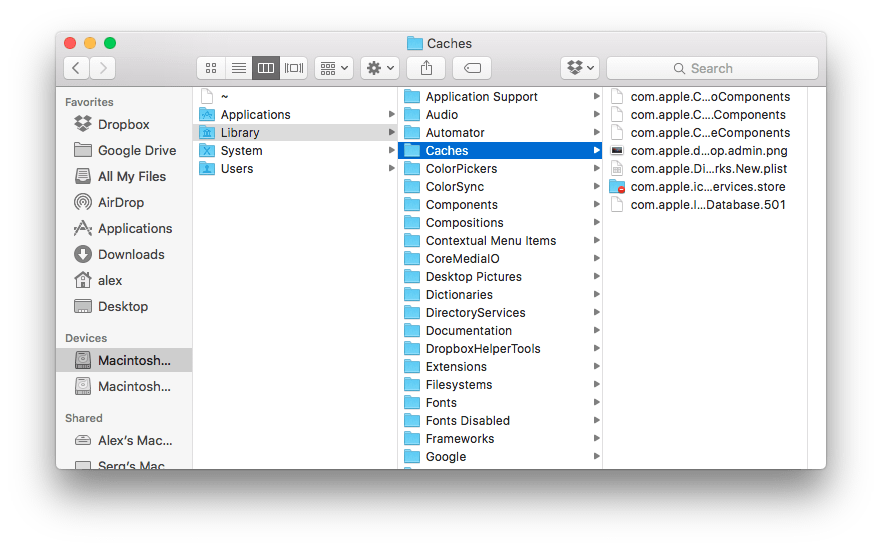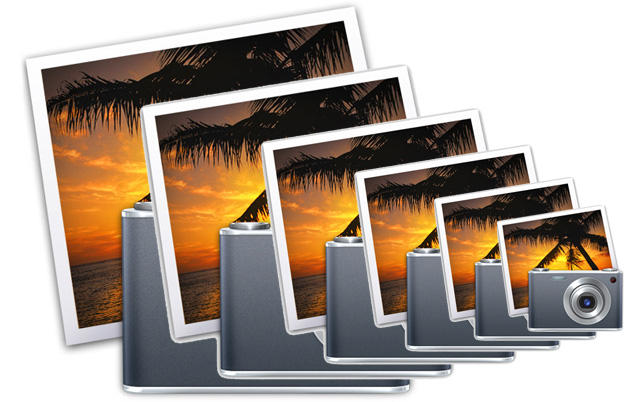Advisabiity Of Deleting Library Caches From Mac
- Oct 25, 2017 This could be caused by a corrupt library cache. To prevent the cache from becoming corrupt, you should delete everything in the Caches folders once a month, about the same time you run the file system checker mentioned in a previous article.+ +Here’s how to clean your caches:+ +1. Choose Usersyour user nameLibraryCaches.+ +2.
- Apr 14, 2017 Caches store information that Mac system or applications need to quickly launch service. Generally, you may not notice this part of data in your MacBook Air until you need to delete unneeded files to get more space or clear cache to fix software problems.
- How to troubleshoot a swollen Photos cache folder A reader uses a macOS Photos library stored on an external drive, but his startup disk has a bloated cache.
- How to clear safari cache, without losing saved passwords? I want to clear cache, but not saved website password data. If your passwords are saved to keychain it does not delete those when you clear data and history. 1 point 4 years ago. Two methods (there might be more). Bought a MacBook Air 2020 and it seems.
- Advisability Of Deleting Library Caches From Mac Computer
- Advisability Of Deleting Library Caches From Mac Free
In my iPhone app I'm caching the raw data of some compressed files to save loading time. But those files may change in an update. Will iOS clear /Library/Caches for me when the app is updated or I. Another way to access the Library Folder on your Mac is by using the Folder Option on your Mac. Left-click your mouse anywhere on the screen of your Mac to reveal the Go Option in the top menu bar. You can also click on the Finder Icon in the Dock of your Mac to activate the Go option.
Soil library mac torrent. Apr 19, 2014 The code is cross-platform and has been tested on Windows, Linux, and Mac. (The heaviest testing has been on the Windows platform, so feel free to email me if you find any issues with other platforms.) Simply include SOIL.h in your C or C file, link in the static library, and then use any of SOIL's functions. Aug 19, 2011 Original library scaled image to be POT and then used custom procedure to generate mipmaps. This can take some time. This change uses glGenerateMipmapEXT (if GLEXTframebufferobject extension is available). This way Soil can create mipmaps for NPOT textures and use hardware support. New flag is added: SOILFLAGGLMIPMAPS. It can be passed to the SOIL. SOIL is a tiny C library used primarily for uploading textures into OpenGL. It is based on stbimage version 1.16, the public domain code from Sean Barrett (found here ). I have extended it to load TGA and DDS files, and to perform common functions needed in loading OpenGL textures.

May 30, 2019 Despite the fact that Apple keeps the Mac Library folder hidden from users, it’s good to learn how to show the Library folder on Mac. You may need to access the Library folder when you need to clear cache, remove the app’s leftovers, edit preference files manually, etc.

| Click here to return to the 'Delete caches and save disk space' hint |
---
zs
For an Intel equivalent of the disk space usage, try Disk Inventory, also free.
Also, to skip the typing everytime & for a graphical interface, these options are available in both maintenance tools of Onyx and iTweax.
The heavier-duty Onyx actually doesn't indicate the amount used by the Cache, which the light-weight iTweax does.
I recently recovered 5 gigs of hard drive space using Tiger Cache Cleaner. My iBook also starts up and runs noticeably faster now.
$ du -k ~/Library/Caches/ sort -n
Great for spotting where that space is going
(you may need to sudo it)
$ sudo -k ~/Library/Caches/ sort -n > du_cache.txt
to get a text file
Doesn't work..
---
Father of Jeremy Logan
Advisability Of Deleting Library Caches From Mac Computer
---
Father of Jeremy Logan
just use a . (ie. period) in place of pwd.. and no quotes. FYI: in unix the . stands for the current directory and a . stands for the parent directory.
It's easier than that!
du -k sort -n
du defaults to the present directory
(Comparable to TreeSize on Win-Systems)
-- brf
---
--
Adam C.
I'm not sure if this hint has been posted before but if you get info on each application file there are installed language options. I went through all of my apps and deleted all of them except english. Most times this will halve the size of the app. Apple is notorious for installing 12 different languages for each app. I believe there is an apple script that does this automatically too.
Just be careful about deleting some application localizations. Some applications may have dependencies to those localizations. Some time ago, I remember a problem when someone tried to delete localizations, and they ended up having to reinstall that application.
Yep, certain apps can mysteriously misbehave after you've deleted their language localization files. And Apple software updates can reinstall ones you've deleted so it's not necessarily a one-time removal routine.
I don't see any reason to risk removing those files unless reclaiming disk space is a necessity and there are no safer alternatives.
Here’s how to access an individual photo from an old iPhoto library.If you go to your home directory, there is a folder called ‘Pictures’ where Apple stores all your photos. Don’t do this, but if you were to click it then it would try to open in iPhoto, or Photos. It appears as one file.  If you have used iPhoto, then in the ‘Pictures’ folder there will be a file called ‘iPhoto Library’.
If you have used iPhoto, then in the ‘Pictures’ folder there will be a file called ‘iPhoto Library’.
I can recommend Monolingual (monolingual.sourceforge.net), a neat little software that does just that - removes language resources you don't want/need. I've been using it for a couple of years now without problems (making sure never to remove any of the English varieties (my system language).
Anders
Just for reference, I will reiterate what has already been said about the long-term importance (or lack there of) of files in the ~/Library/Caches directory.
Recently I discovered a bug in an application (the producer of said application was 'some kind of fruit company' who shall remain nameless), and the top level tech that I was working with confirmed that its no big deal to delete the contents of the ~/Library/Caches directory.
I'm not advocating that you empty the directory and then lock the folder so that it can never be populated, nor am I advocating that you empty the directory at all. I'm simply stating that you can empty the directory and its not a big deal.
If your Caches folder is out of control, then you should think about some sort of cleaning.
For comparison purposes, here are the current sizes for my (Mac OS X created) Caches folders:
/Library/Caches
24.7 MB
/System/Library/Caches
11.6 MB
/private/var/root/Library/Caches
16 KB
~/Library/Caches
80.2 MB
The oldest directory within the ~/Library/Caches directory was modified Apr 4 2006.
I'd be cautious deleting ~/Library/Caches/Metadata because it contains Spotlight proxy files used by iCal, Safari, and other apps. Something will eventually trigger those files to be regenerated but before that happens Spotlight searching may be temporarily crippled. I discovered that awhile ago with Safari bookmarks and eventually deleted and restored the Bookmarks.plist file to force proxy files to be rebuilt after other methods had failed to do it.
Advisability Of Deleting Library Caches From Mac Free
First, a true confession: Until very recently (i.e. today) I didn't know about the need to periodically delete the cache and as a result, mine was gigantic.
I deleted the cache by dragging it into the trash and then emptying the trash. Then I told the computer to restart. I understand it takes awhile to rebuild the cache, but I'm not sure what 'awhile' means. It's been almost 2 hours now and I'm wondering if that's normal for the (gulp) years worth of stuff that was stored in my cache. How many hours should I let this continue before taking some other action?
Thanks for your help.